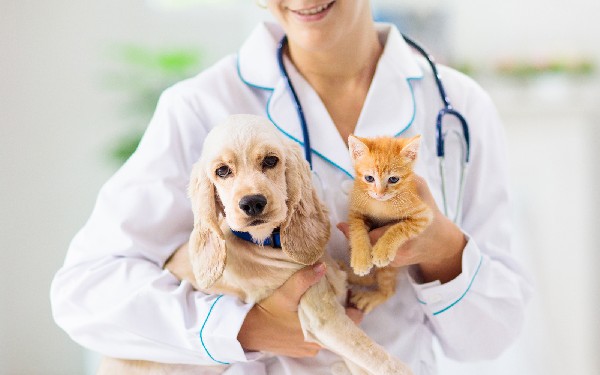
Veterinary course details
A Doctor of Veterinary Medicine (DVM) program is a comprehensive and rigorous educational path that prepares students for a career in veterinary medicine. Here are the detailed aspects of a typical veterinary course:
Admission Requirements
- Educational Background
- Pre-Veterinary Studies: Completion of specific prerequisite courses during undergraduate studies, typically including biology, chemistry, physics, and mathematics.
- Bachelor’s Degree: Many veterinary schools require a bachelor’s degree, although some may accept applicants with a minimum of 2-3 years of undergraduate coursework.
- Standardized Tests
- GRE (Graduate Record Examination): Required by many veterinary schools.
- CASPer Test: An online situational judgment test used by some veterinary programs to assess non-cognitive skills.
- Experience
- Animal Experience: Practical experience working with animals (e.g., volunteering at animal shelters, farms, or veterinary clinics).
- Veterinary Experience: Shadowing or working with licensed veterinarians to gain insight into the profession.
- Application Materials
- Personal Statement: An essay detailing the applicant’s interest in veterinary medicine, experiences, and career goals.
- Letters of Recommendation: Typically required from professors, veterinarians, or professional mentors.
- Transcripts: Academic records from all attended institutions.
Curriculum Structure
Year 1: Foundational Sciences
- Gross Anatomy: Study of animal body structures through dissection.
- Histology: Examination of tissues and their microscopic structures.
- Physiology: Functions and mechanisms of various animal systems.
- Biochemistry: Chemical processes within and relating to living organisms.
- Genetics: Principles of heredity and animal breeding.
Year 2: Pre-Clinical Sciences
- Microbiology: Study of microorganisms and their effects on animals.
- Immunology: The immune system and its role in disease prevention.
- Pathology: Understanding disease processes through the study of tissues, organs, and bodily fluids.
- Pharmacology: Drug actions, interactions, and therapeutic uses.
- Parasitology: Study of parasites and their impact on animal health.
Year 3: Clinical Sciences
- Clinical Medicine: Diagnosis and treatment of diseases in small and large animals.
- Surgery: Principles and techniques of veterinary surgery.
- Anesthesia: Methods and management of anesthesia and pain control.
- Diagnostic Imaging: Use of radiographs, ultrasound, MRI, and CT scans in diagnostics.
- Theriogenology: Reproduction, breeding, and neonatal care.
Year 4: Clinical Rotations
- Small Animal Medicine and Surgery: Hands-on experience with pets in clinical settings.
- Large Animal Medicine and Surgery: Working with livestock and equines in field and hospital settings.
- Exotic Animal Medicine: Care and treatment of birds, reptiles, and other exotic pets.
- Emergency and Critical Care: Managing urgent and life-threatening conditions.
- Elective Rotations: Specialized areas such as oncology, cardiology, dermatology, and more.
Licensing and Certification
- NAVLE (North American Veterinary Licensing Examination)
- Eligibility: Typically taken during the final year of the DVM program.
- Content: Covers all aspects of veterinary medicine, including clinical practice and public health.
- State Licensure
- Requirements: Vary by state but generally include passing the NAVLE and meeting state-specific criteria.
Postgraduate Opportunities
- Internships
- Duration: 1 year.
- Focus: Provides additional clinical experience and training in a specific area of interest.
- Residencies
- Duration: 3-4 years.
- Specialization: Advanced training in specialties such as surgery, internal medicine, dermatology, cardiology, etc.
- Certification: Leads to board certification in the chosen specialty.
Career Paths
- Private Practice
- Small Animal Practice: Focuses on pets like dogs and cats.
- Large Animal Practice: Involves working with livestock and horses.
- Mixed Practice: Combines small and large animal care.
- Public Health and Regulatory Medicine
- Government Agencies: Roles in USDA, CDC, FDA, etc.
- Epidemiology: Disease surveillance and control.
- Research and Academia
- Veterinary Research: Conducting studies to advance animal health.
- Teaching: Educating future veterinarians at universities and colleges.
- Industry
- Pharmaceuticals: Developing and testing animal health products.
- Food Safety and Inspection: Ensuring the safety of food products.
Continuing Education
- CE Credits: Required for maintaining licensure.
- Conferences and Workshops: Opportunities to stay updated on the latest advancements in veterinary medicine.
- Online Courses and Seminars: Flexible learning options for professional development.
Conclusion
The veterinary course is designed to equip students with a thorough understanding of animal health, diseases, diagnostics, and treatments. The journey to becoming a veterinarian involves rigorous education, hands-on training, and a commitment to lifelong learning. With diverse career paths and the potential to make a significant impact on animal and public health, veterinary medicine offers a fulfilling and dynamic profession.




